Theatres of the Far East
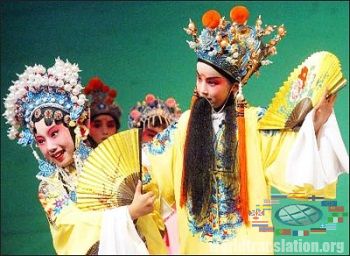
Loud exotic music, singing in an unknown language, bright colorful makeup or expressive masks of characters, sign language and complex movements of the body, acrobatics, dance, as well as unusually lush costumes - all these theaters of the Eastern countries offer the viewer. Even educated in other traditions Europeans will be unable not to admire the perfection of theatrical forms.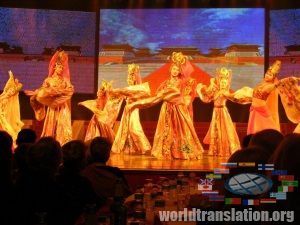 Theater arts of China, Japan and Korea are essentially cognate with dance of shaman, as well as some rituals of Buddhism, Confucianism and Shinto religion. In the performances are often used masks and puppets, and also symbolic gestures, mime, dance and music are dominated here over the word. Stage props also is symbolic, because in the Asian theater the purpose is not to transfer the viewer in a certain place and time, but to transfer to him some important ideas from the ancient myths, fairy tales and legends.
Theater arts of China, Japan and Korea are essentially cognate with dance of shaman, as well as some rituals of Buddhism, Confucianism and Shinto religion. In the performances are often used masks and puppets, and also symbolic gestures, mime, dance and music are dominated here over the word. Stage props also is symbolic, because in the Asian theater the purpose is not to transfer the viewer in a certain place and time, but to transfer to him some important ideas from the ancient myths, fairy tales and legends.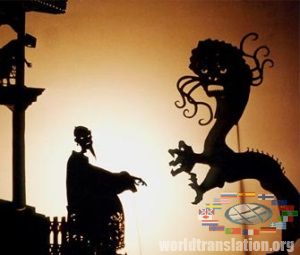 Tradition of the Chinese theater dates back several thousand years. It is characterized by the union of acrobatics and pantomime with specific music, the principles of which were developed in order to gain goodwill of supernatural beings to the inhabitants of sublunary world. From the old times known shamanic worship dances, in which they revere the gods and rulers.
Tradition of the Chinese theater dates back several thousand years. It is characterized by the union of acrobatics and pantomime with specific music, the principles of which were developed in order to gain goodwill of supernatural beings to the inhabitants of sublunary world. From the old times known shamanic worship dances, in which they revere the gods and rulers.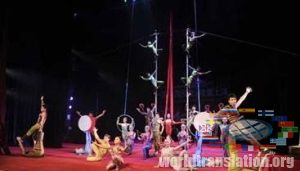 Around 300 BC appeared shadow theater, which even to this day is very popular in Asia. Active development of Chinese drama refers to the time of Emperor Xuanzong, the founder of the Imperial Theatre Academy, in which the actors were taught to sing, dance, and music. Around the X century to singing and dancing were added scenes, which representing historical events. Thus arose a mixed view, called Zayu, which became the basis of classical Chinese drama.
Around 300 BC appeared shadow theater, which even to this day is very popular in Asia. Active development of Chinese drama refers to the time of Emperor Xuanzong, the founder of the Imperial Theatre Academy, in which the actors were taught to sing, dance, and music. Around the X century to singing and dancing were added scenes, which representing historical events. Thus arose a mixed view, called Zayu, which became the basis of classical Chinese drama.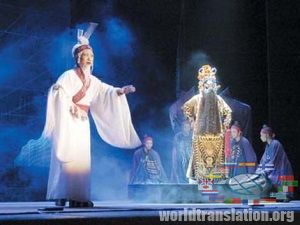 Its interesting, that urgent problems of XIII - XIV centuries, which were addressed in Zayu - caused in Northern China several rebellions against the rulers of the Mongol dynasty. The most popular form of theater in China is Jīngjù or Peking Opera. It appeared as a synthesis of presented in Beijing theatrical traditions of Anhui and Hubei provinces. The main features of Peking Opera is Kunqu singing and lyrical-poetic "plebeian" dramas of the reign of Ming Dynasty.
Its interesting, that urgent problems of XIII - XIV centuries, which were addressed in Zayu - caused in Northern China several rebellions against the rulers of the Mongol dynasty. The most popular form of theater in China is Jīngjù or Peking Opera. It appeared as a synthesis of presented in Beijing theatrical traditions of Anhui and Hubei provinces. The main features of Peking Opera is Kunqu singing and lyrical-poetic "plebeian" dramas of the reign of Ming Dynasty.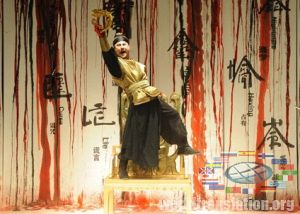 The basis of performance in the style of Peking Opera lies in a perfect play of the troupe, which creates a "framing" for the vivid personality of the main character. Actor, who performing this role should be simultaneously a singer, reciter, dancer and acrobat. In Peking Opera, to scenarios treat with great freedom - for example, the duration of the performances can vary depending on the conditions of the specific performance and interpretation of the play.
The basis of performance in the style of Peking Opera lies in a perfect play of the troupe, which creates a "framing" for the vivid personality of the main character. Actor, who performing this role should be simultaneously a singer, reciter, dancer and acrobat. In Peking Opera, to scenarios treat with great freedom - for example, the duration of the performances can vary depending on the conditions of the specific performance and interpretation of the play.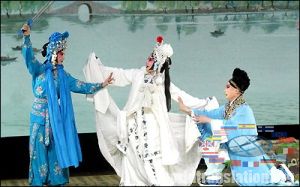 Spectators in general know the content of the performances, and the actor has to show the play as close as possible to established over the centuries canons. Actors usually play several performances in a row, so, happens, that the public spend all day in the theater, eat and drink, simultaneously do not hesitate to loudly comment on what is happening on the stage.
Spectators in general know the content of the performances, and the actor has to show the play as close as possible to established over the centuries canons. Actors usually play several performances in a row, so, happens, that the public spend all day in the theater, eat and drink, simultaneously do not hesitate to loudly comment on what is happening on the stage.
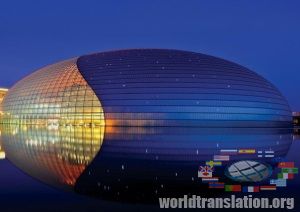 As in other traditional Asian theaters, during a performance of Beijing opera the stage is free from the side scenes and decorations. Most often, the only requisites are a bed, a chair and a table, which can represent, for example, a throne, a mountain or a draw-well, and a specific value gives them corresponding actor's play.
As in other traditional Asian theaters, during a performance of Beijing opera the stage is free from the side scenes and decorations. Most often, the only requisites are a bed, a chair and a table, which can represent, for example, a throne, a mountain or a draw-well, and a specific value gives them corresponding actor's play. 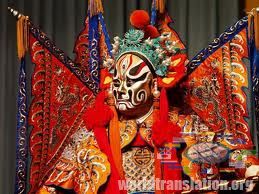 For example, when the character stands on a table or chair and covers head with his hands, this means that he became invisible and escaped from his pursuers. If he takes a whip in his hand, this means that he sits on the horse. If character holds two flags with the drawn wheels, this means a trip in the cart.
For example, when the character stands on a table or chair and covers head with his hands, this means that he became invisible and escaped from his pursuers. If he takes a whip in his hand, this means that he sits on the horse. If character holds two flags with the drawn wheels, this means a trip in the cart.
Video: "Chinese dance Guanin with a thousand hands"